
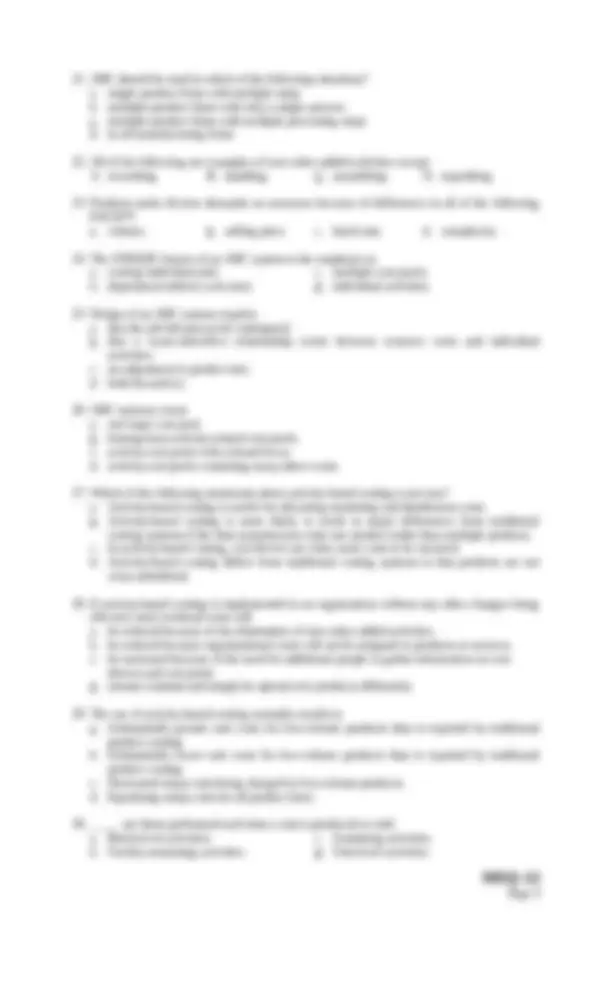
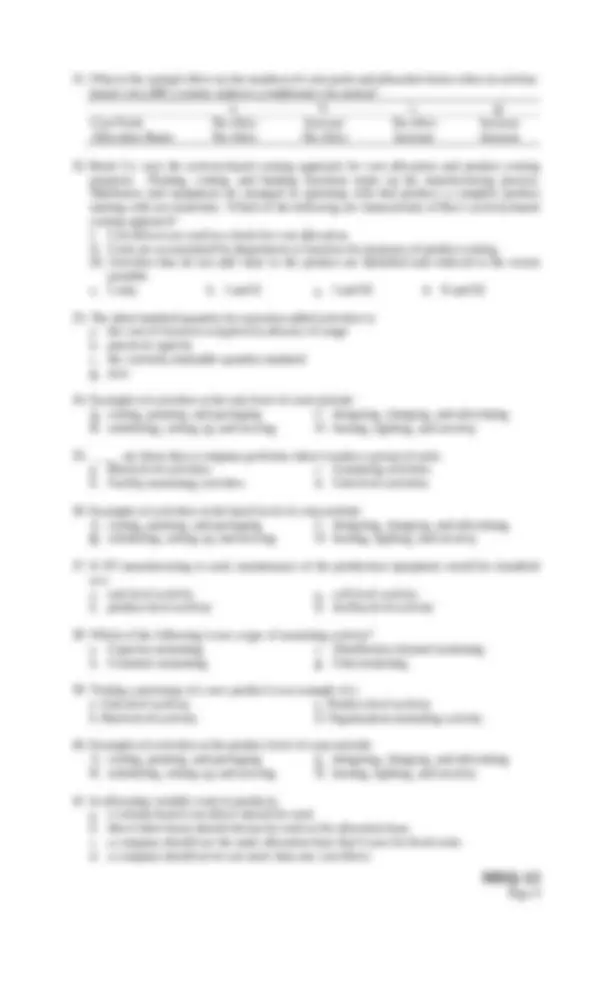
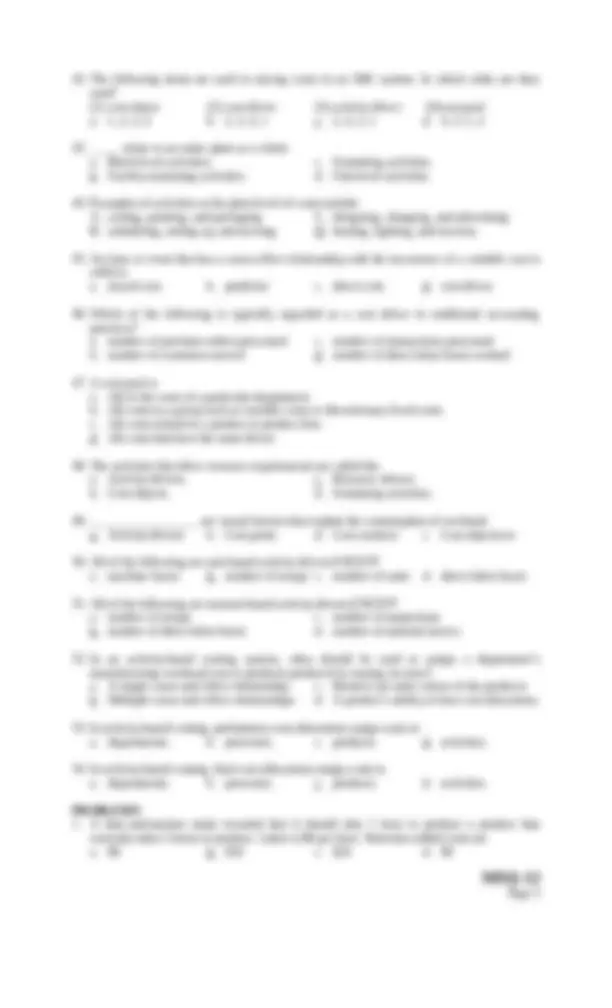
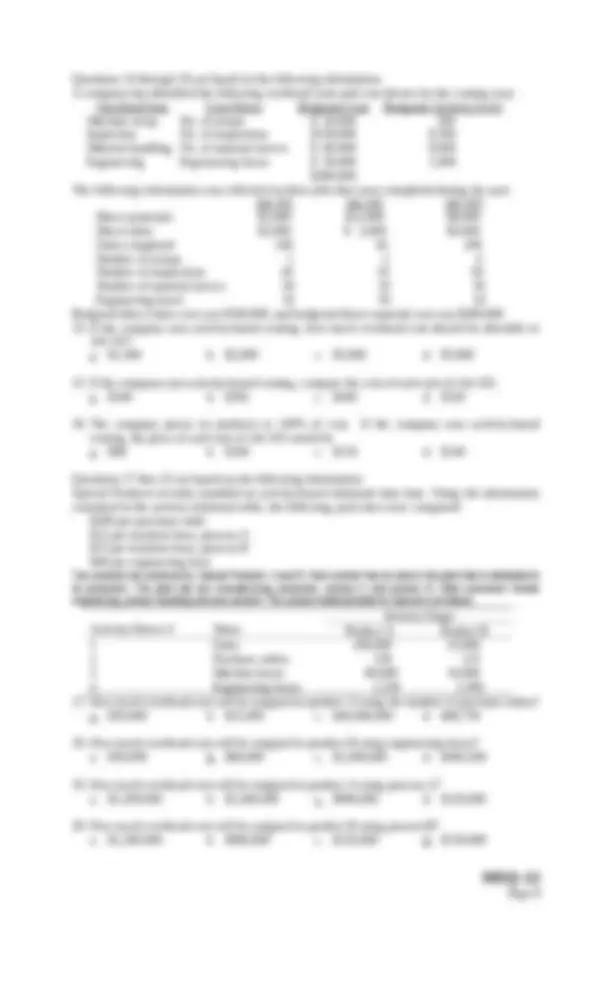
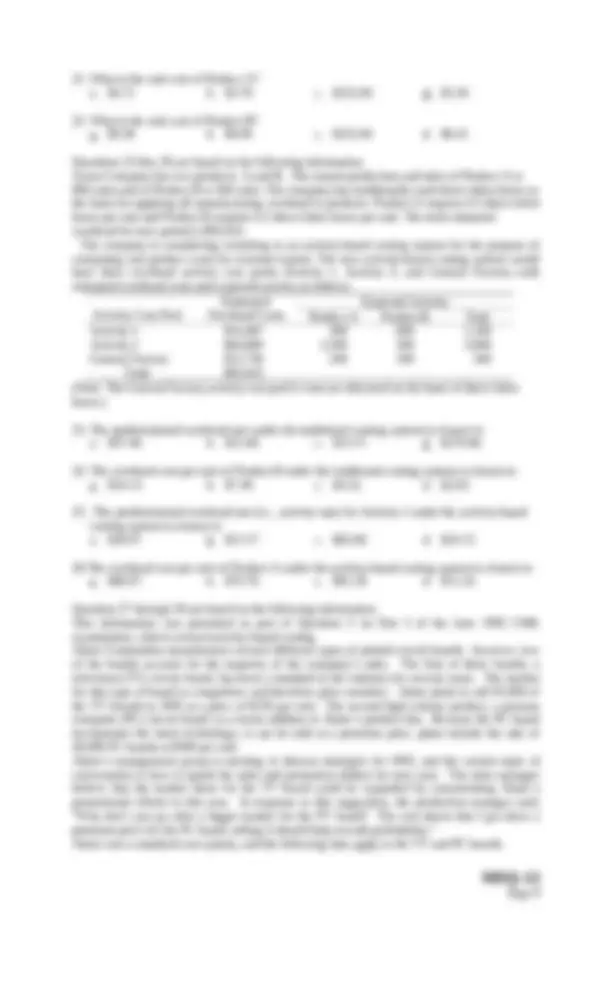
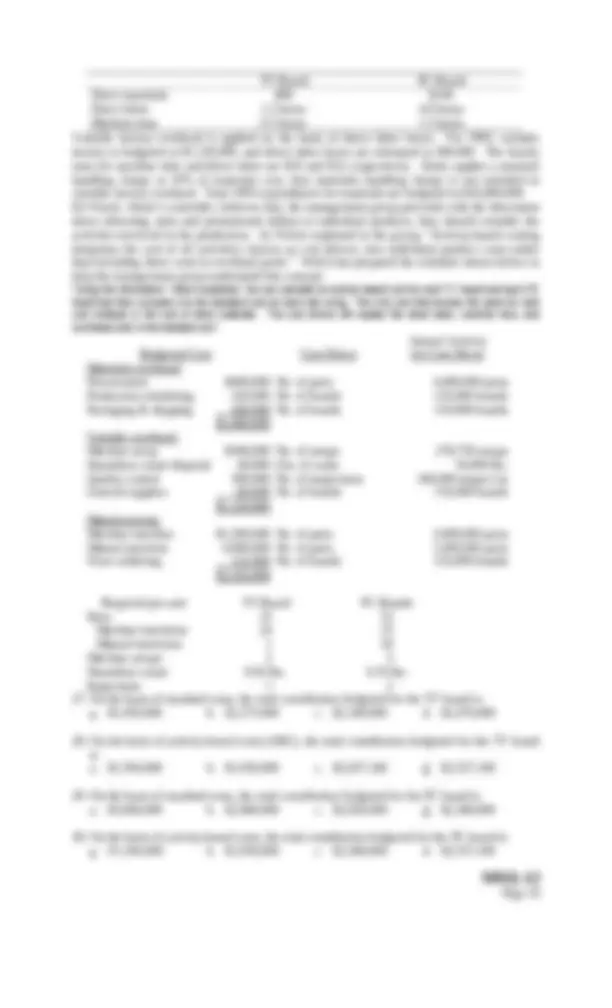


Study with the several resources on Docsity

Earn points by helping other students or get them with a premium plan


Prepare for your exams
Study with the several resources on Docsity

Earn points to download
Earn points by helping other students or get them with a premium plan
Community
Ask the community for help and clear up your study doubts
Discover the best universities in your country according to Docsity users
Free resources
Download our free guides on studying techniques, anxiety management strategies, and thesis advice from Docsity tutors
Cost accounting| Lecture notes| exam notes Cost accounting| Lecture notes| exam notes
Typology: Study notes
1 / 11

This page cannot be seen from the preview
Don't miss anything!







Manila MANAGEMENT ADVISORY SERVICES ACTIVITY-BASED COSTING THEORY
Questions 14 through 16 are based on the following information. A company has identified the following overhead costs and cost drivers for the coming year. Overhead Item Cost Driver Budgeted Cost Budgeted Activity Level Machine setup No. of setups $ 20,000 200 Inspection No. of inspections $130,000 6, Material handling No. of material moves $ 80,000 8, Engineering Engineering hours $ 50,000 1, $280, The following information was collected on three jobs that were completed during the year: Job 101 Job 102 Job 103 Direct materials $5,000 $12,000 $8, Direct labor $2,000 $ 2,000 $4, Units completed 100 50 200 Number of setups 1 2 4 Number of inspections 20 10 30 Number of material moves 30 10 50 Engineering hours 10 50 10 Budgeted direct labor cost was $100,000, and budgeted direct material cost was $280,000.
TV Board PC Board Direct materials $80 $ Direct labor 1.5 hours 4.0 hours Machine time 0.5 hours 1.5 hours Variable factory overhead is applied on the basis of direct labor hours. For 1993, variable factory is budgeted at $1,120,000, and direct labor hours are estimated at 280,000. The hourly rates for machine time and direct labor are $10 and $14, respectively. Alaire applies a material handling charge at 10% of materials cost, thus materials handling charge is not included in variable factory overhead. Total 1993 expenditures for materials are budgeted at $10,600,000. Ed Watch, Alaire’s controller, believes that, the management group proceeds with the discussion about allocating sales and promotional dollars to individual products, they should consider the activities involved in the production. As Welch explained to the group, “Activity-based costing integrates the cost of all activities, known as cost drivers, into individual product costs rather than including these costs in overhead pools.” Welch has prepared the schedule shown below to help the management group understand this concept. “Using this information,” Welch explained, “we can calculate an activity-based cost for each TV board and each PC board and then compare it to the standard cost we have bee using. The only cost that remains the same for both cost methods is the cost of direct materials. The cost drivers will replace the direct labor, machine time, and overhead costs in the standard cost.” Budgeted Cost Cost Driver Annual Activity for Cost Driver Materials overhead: Procurement $400,000 No. of parts 4,000,000 parts Production scheduling 220,000 No. of boards 110,000 boards Packaging & shipping 440,000 No. of boards 110,000 boards $1,060, Variable overhead: Machine setup $446,000 No. of setups 278,750 setups Hazardous waste disposal 48,000 Lbs. of waste 16,000 lbs. Quality control 560,000 No. of inspections 160,000 inspect’ns General supplies 66,000 No. of boards 110,000 boards $1,120, Manufacturing: Machine insertion $1,200,000 No. of parts 3,000,000 parts Manual insertion 4,000,000 No. of parts 1,000,000 parts Wave soldering 132,000 No. of boards 110,000 boards $5,332, Required per unit TV Board PC Boards Parts 25 55 Machine insertions 24 35 Manual insertions 1 20 Machine setups 2 3 Hazardous waste 0.02 lbs. 0.35 lbs. Inspections 1 2
Answer Key Theory